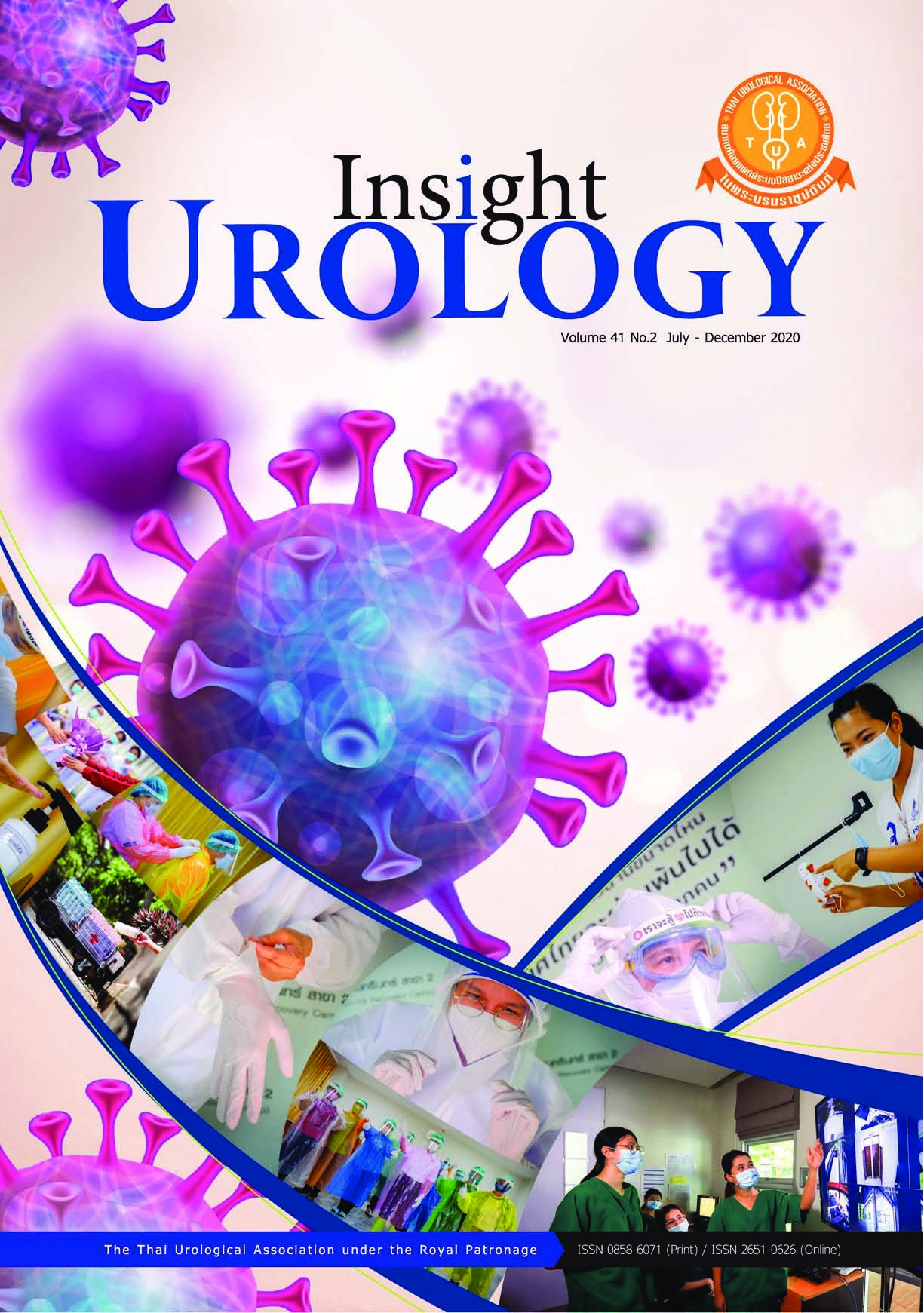Factors affecting the durability of flexible ureteroscopes: An academic center review
Keywords:
Flexible ureteroscopes, durability, URF-V, holmium laserAbstract
Objective: To analyze the factors which affect the durability of the flexible ureteroscope and the causes of scope damage in a single academic center.
Material and Method: Between March 2014 and August 2017, 479 flexible ureteroscopic procedures, using 6 flexible ureteroscopes (Olympus model URF-V),
were systematically reviewed. Data including indication for procedures, auxiliary device usage, the characteristics of scope damage, and the number of times a
scope was used before requiring major repair were gathered. Fisher exact test and Chi-square test were used to evaluate the factors which caused the damage.
Results: The major flexible ureteroscopic procedure performed was treatment of renal calculi (81%). The most common auxiliary device used was the Holmium laser (70%). The most common cause of damage requiring repair was working channel leakage (93%). The factor that affected the durability of flexible ureteroscopes was the size of laser fiber. Utilizing laser fiber 200 nm decreased scope damage significantly compared to various other sizes (p-value=0.002 and p-value<0.001). However, the usage of nitinol basket and ureteral access sheath did not affect the durability of flexible ureteroscopes.
Conclusion: Large laser fibers are a risk factor for flexible ureteroscope damage. Utilizing small laser fibers during flexible ureteroscopy can decrease scope damage significantly
References
Basillote JB, Lee DI, Eichel L, Clayman RV. Ureteroscopes: flexible, rigid, and semirigid. Urol Clin North Am 2004;31:21-32.
Roupret M, Bubjuk M, Comperat E, ZigeunEr R, Sylvester RJ, Burger M, et al. European Association of Urology guidelines on upper urinary tract urothelial carcinoma: 2017 update. Eur Urol 2018;73:111-22.
Assimos D, Krambeck A, Miller NL, Monga M, Murad MH, Nelson CP, et al. Surgical Management of Stones. AUA/Endourology Society Guideline 2016. J Urol 2016;196:1153-60.
Landman J, Lee DI, Lee C, Monga M. Evaluation of overall costs of currently available small flexible ureteroscopes. Urology 2003;62:218-22.
Afane JS, Olweny EO, Bercowsky E, Sunsaram CP, Dunn MD, Shalhav AL, et al. Flexible ureteroscopes: a single center evaluation of the durability and function of the new endoscopes smaller than 9Fr. J Urol 2000;164:1164-8.
Pietrow PK, Auge BK, Delvecchio FC, Silverstein AD, Weizer AZ, Albala DM, et al. Techniques to maximize flexible ureteroscope longevity. Urology 2002;60:784-8.
Shah K, Monga M, Knudsen Bl. Prospective Randomized Trial Comparing 2 Flexible Digital Ureteroscopes: ACMI/Olympus Invisio DUR-D and Olympus URF-V. Urology 2015;85:1267-71.
Karaolides T, Bach C, Kachrilas S, Goyal A, Masood J, Buchholz N. Improving the durability of digital flexible ureteroscopes. Urology 2013;81:717-22.
Sung JC, Springhart WP, Marguet CG, L’Esperance JO, Tan YH, Albala DM, et al. Location and etiology of flexible and semirigid ureteroscope damage. Urology 2005;66:958-63.
Carey RI, Gomez CS, Maurici G, Lynne CM, Leveillee RJ, Bird VG. Frequency of ureteroscope damage seen at a tertiary care center. J Urol 2006;176:607-10; discussion 610.



